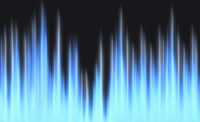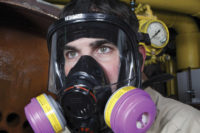Too loud! This year’s list of toys that can cause hearing damage
 Listening to a kid’s toy scream, “Amarillo—yellow! Verde—green!” for hours is a special kind of misery.
Listening to a kid’s toy scream, “Amarillo—yellow! Verde—green!” for hours is a special kind of misery.
While many parents veto loud toys because they’re annoying, the Sight & Hearing Association is asking parents to consider another reason: hearing damage.
The St. Paul, Minn., organization just released its annual “Noisy Toys” list in advance of Christmas.
Taking the top spot is a toy marketed for 3-month-olds: Baby Einstein’s Take Along Tunes.
According to Baby Einstein’s Web site, Takealong Tunes is “baby’s version of an MP3 player” that plays seven classical masterpieces. When held directly against the ear, the toy measured 114.8 decibels and 88.1 decibels when a child’s arm length away. The safe limit is 85 decibels at 50 centimeters (about 20 inches) away from the toy, standards that are set by ASTM International (formerly American Society for Testing and Materials).
“We were floored when we saw that number,” says Kathy Webb, the executive director of the Sight & Hearing Association. “We had to re-test it.”
A spokeswoman from Kids II, which owns Baby Einstein, responded by saying that the toy “has been tested by an accredited third-party laboratory and found to comply with sound level requirements stated in the US, Canadian and European standards for toys which produce sound,” and that the company stays “true to our mission of putting the safety and happiness of children and parents first.”
Other toys on the list include a cat-themed keyboard called B. Meowsic and the “Despicable Me 2” Fart Blaster.
While there are standards for how loud toys can be, Webb says they aren’t realistic for how kids actually play with toys. Young children often try to find where the noise is coming from and put the speaker up to their faces, she says.
Webb suggests that parents test toys at the store before buying them and pass up the ones that seem too loud. Look for toys that have volume controls. If a well-meaning (or malicious) relative gifts your child a noisy toy, put clear packing tape over the speaker to muffle the noise.
Of 18 toys tested this year by the Sight & Hearing Association, seven blasted above 100 decibels (dB), which can damage hearing in less than 15 minutes.
Walking through the toy aisles at various stores, SHA selects toys that appear to be too loud for consumers. Toys are brought back to their office, and a hand-held sound level meter is used to measure the sound. Measurements are taken with the sound level meter placed directly on the speaker and 10 inches from the speaker.
SHA reminds consumers that hearing loss is cumulative and it typically does not happen from one event; it gradually happens over time and that is why it is important to protect hearing at a young age.
Toys are required to meet the acoustic standard set by the American Society of Testing and Materials, which states that the sound-pressure level produced by toys shall not exceed 85 dB at 50 cm from the surface of the toy.
“The problem with this standard is 50 cm is longer than the average arm length of an adult. We test toys based on how a child would play with them, not how an adult would play with them. If you watch a child playing with a noise-producing toy, you will see them hold it close to their face, next to their ears or within their arms length, which is closer to 10 inches (25 cm)”, explains Kathy Webb, Executive Director of SHA.
Parents can do a few things to make it a little quieter this holiday season. SHA recommends testing the toy before you buy it. Webb suggests you, “push buttons and rattle toys as you walk through the toy aisle and if a toy is too loud for you, it will be too loud for your child. Look for toys that have volume controls and if you must buy a noisy toy, or your child receives a noisy toy as a gift, place clear packing tape over the speaker, it will reduce the sound level enough to make the toy ear-safe.”
The University of Minnesota/Department of Otolaryngology confirmed in a study that covering noise-producing toys with tape or glue will significantly reduce the noise level of a toy, making it safer for children.
Founded in 1939, Minnesota-based Sight & Hearing Association is dedicated to enabling lifetime learning by identifying preventable loss of vision and hearing. If consumers have a noisy toy to report, they can contact SHA at kwebb@sightandhearing.org or the Consumer Product Safety Commission at (800) 638-2772.
If you would like to receive a pdf copy of the complete 2013 Noisy Toys List, please contact SHA at kwebb@sightandhearing.org.
Source: The Washington Post
Looking for a reprint of this article?
From high-res PDFs to custom plaques, order your copy today!





